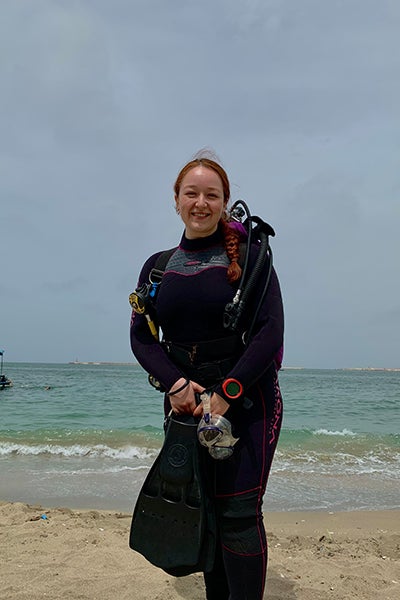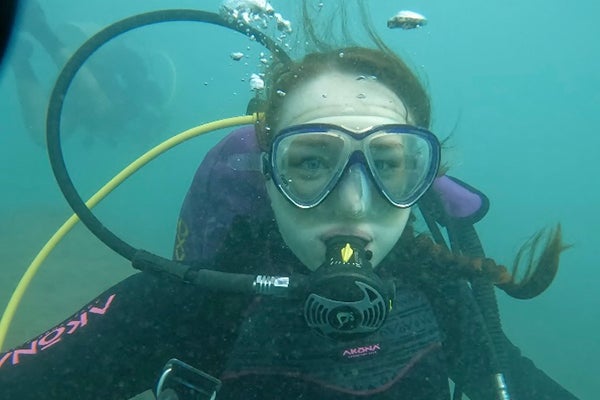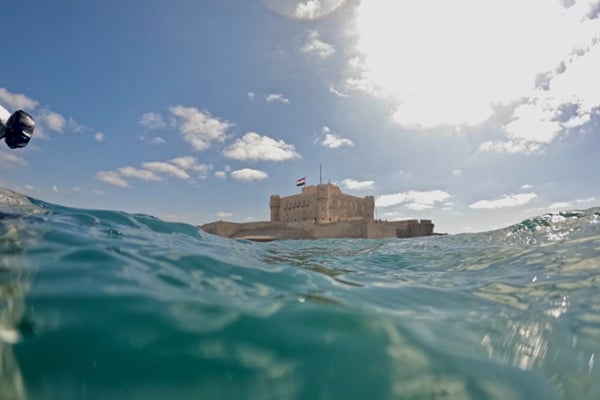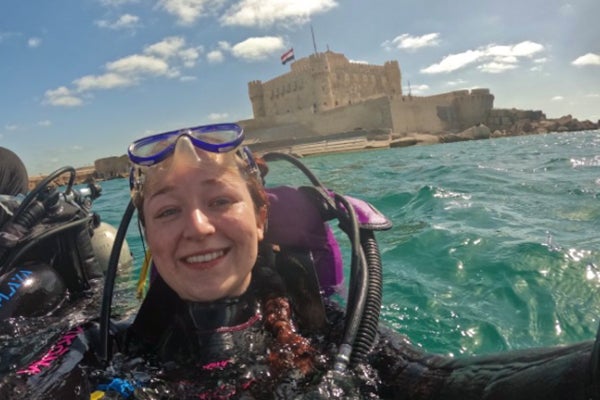ECU maritime studies graduate student attends unique Egyptian underwater field school
Katelyn Rollins, one of East Carolina University’s newest master’s degree graduates of the Maritime Studies program in the Department of History, recently attended a unique field school in Egypt. She was among 12 people worldwide selected to join the prestigious underwater cultural heritage training in Alexandria sponsored by the Alexandria Centre for Maritime Archaeology and Underwater Cultural Heritage
“I feel beyond grateful that I was accepted to participate in the field school, the first field school of its kind in Alexandria, Egypt,” she said. “I learned so much during my time in Egypt. I had the opportunity to further my skills in photogrammetry, practice underwater excavation techniques and learn more about the history of maritime culture in Alexandria and other regions of Egypt.”
Rollins participated April 15-30 in the archaeological excavation with funding from the Thomas Harriot College of Arts and Sciences dean’s office and the Biblical Archaeology Society’s dig scholarship program.
While in Egypt, she participated in dives at the Eastern Harbor of Alexandria on the Heinkel He 111 Airplane (one of the most numerous World War II German bombers), the original ancient harbor wall of Alexandria and the Pharaoh’s site, the underwater site next to the Citadel of Qaitbay, which is a fort that contains the remains of the ancient lighthouse of Alexandria.
“Katelyn’s extensive dive training at ECU and her relevant master’s research made her stand out for this unique and exciting opportunity,” said Dr. Helen Dixon, assistant professor of history and Rollins’ thesis advisor.
Throughout her academic journey, Rollins was fascinated by Egypt’s culture and maritime history. She traveled to Cairo earlier in her program to study reliefs and other historical art sources. Before leaving for the field school, she defended her thesis, “Hatshepsut and Her Ships: Watercraft as Intentional Symbols of Power in Dynastic Egypt.”

Before participating in ECU’s spring commencement ceremony, Katelyn Rollins defended her master’s thesis early so she could attend a unique underwater field school in Egypt. (Contributed photos)
“Katelyn brought together her love of ancient Egypt and her expertise in maritime technologies and history to write a thesis that offered new interpretations of how one of the most famous women pharaohs, Hatshepsut (who reigned circa 1479 – 1458 B.C.E.), used images of ships to assert and reimagine her royal power,” Dixon said.
“I wrote my master’s thesis on ancient Egyptian watercraft iconography, and while I had spent the last two years researching Egypt’s maritime culture, it did not compare to getting to experience it in person,” Rollins said.
Now that Rollins has completed her degree — she participated in ECU’s May 3 commencement ceremony — she said she is ready to be back in the field working on projects in Egypt or the Mediterranean. She also is interested in a job at a museum where she can continue working with Egyptian maritime cultural heritage.
“Working with the Alexandria Center for Maritime Archaeology and Underwater Cultural Heritage and connecting with individuals who share the same passions and interests as me was so fulfilling,” she said. “As I just finished my graduate studies, I now have more connections with individuals I hope to work with for years to come.”

Rollins dives during her unique field school experience in Alexandria, Egypt.

Rollins views the Citadel of Qaitbay from the water.

Rollins’ favorite dive was the underwater remains of the ancient lighthouse of Alexandria, Egypt.